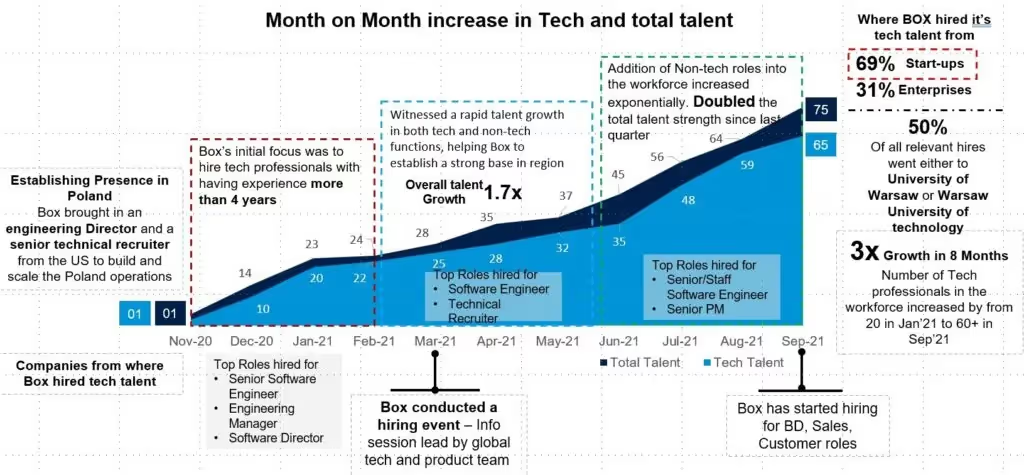A Holistic Talent Approach to the Future of Work
The Future of work we defined during the height of the pandemic is taking a turn. Today, HR leaders must keep pace with the moderating and even diminishing economic growth patterns as they plan the Future of work – which is no easy task! To ensure success in navigating this changing terrain, it’s important for senior human resources personnel to connect directly with their customers. (Internal and sometimes even external customers that businesses serve). After all, understanding customer needs means being able to predict them accurately — something that can’t be achieved without actually hearing from those you serve! Perspective-filled dialogue gives us vital insights into our operations, the advice I learned firsthand during my days of developing planning models for a call center. As a call center forecaster in my early career days, I always doubled jacked and listened to at least 100 plus customer calls in a quarter as we planned to build the forecasting models. Even in this world of big data, the guidelines and perspectives that come from these exercises are immensely helpful in annual planning for Recruitment Leaders and Workforce Planners. In 2004, South Eastern Paper tangled with a tough situation – their customers were griping about the quality of their paper. Undaunted, the CEO devised an innovative plan to get to the root cause: he brought plant employees directly on-site at customer locations so they could witness firsthand what was causing dissatisfaction and take action accordingly. The result? A marked improvement in product quality that left customers delighted!
Two weeks ago, Dan Schulman, CEO of PayPal, gave a very interesting interview. According to Schulman, the following elements make up the Future of work
- As leaders, there may be a lot of constituencies that we need to satisfy (Customers, Regulators, Shareholders). But the single most important Constituency that dictates the company’s success is Employees. The strength and the passion of employees will determine the success of the company
- Hence, the Future of Work approach should be holistic. (take care of the physical, mental, and financial well-being of the employees)
- After all the living expenses, companies should know what is left for an employee to live their lives effectively (This is a powerful statement). How do you measure and support the financial health of an employee?
- All Future of work initiatives should take the workforce one step closer to the customers that businesses serve
- Even with the Tech layoffs, we have a situation where it is difficult to hire critical skills
These points set the tone for the vision of the Future of work. Right now, companies cannot think strategically, owing to what they read in the news and the macro signals coming our way. But strategic actions need not be a long-drawn exercise. The following labor models are actively discussed and supported by us across the board
- Creation of Multi-utility Shared Services Centers in low-cost geo (within the country or across low-cost global locations). For example, creating a hybrid center with Benefits admin with some legal contract review skills to cybersecurity skills in geo like the Philippines
- The pandemic has shifted the way businesses function and recruit personnel in unprecedented ways. Companies have now developed the ability to hire talented individuals virtually, even those located in small towns or remote areas. This newfound capability provides an incredible advantage – making a variety of highly skilled professionals available for sophisticated customer touch activities like financial services firms searching for investment bankers deep within a country.
- A closer look at the Wage Inflation trends – As a general rule, South East Asia is inflating a bit less than its Global counterparts. Inflation in Latin America is high, but currencies are weakening against the dollar. We now have the real possibility of looking at completely different cost structures for some job families. We need to model the details of the cost models
- Near Shore Model – Mexico is a clear winner: After years of hesitation, many companies are taking the plunge and setting up Centers for Excellence in Mexico. The proximity makes it appealing despite any security concerns that may arise – a sense of comfort finally settles in. Mexico’s university ecosystem is also improving
- Finding the location-jewel within your footprint. There may be a scenario where a new location may not make sense to you. You may be ripe for growth and positioning in one of the locations that were successful for you. Box scaled its Warsaw location with a more variety of roles (given as an example case study)

Recruitment is hyper-essential: Recruitment effectiveness and importance is going to be the most important success factor for 2023 and beyond
- In digitally transforming companies, we are still facing about 18% to 20% attrition
- Executives and Experienced Talent have more options with a distributed way of working
- New business initiatives are arriving on the scene, and companies need talented people. (You might have read about the concept of the Superapp and more coming on this front)
- GenZ hiring continues to be a challenge as their evaluation parameters are different and require effective Recruiters to engage with them
- How to amplify Automation driven initiatives? We are conducting several low code/no code talent pool studies, and this will be critical for Enterprises to map the same

Overall, we are pretty excited about HR’s role under emerging circumstances. If we plan the initiatives correctly, we can accelerate transformation and adaptation and make the enterprises genuinely care for a great workplace.










.svg)




















.svg)





.svg)
